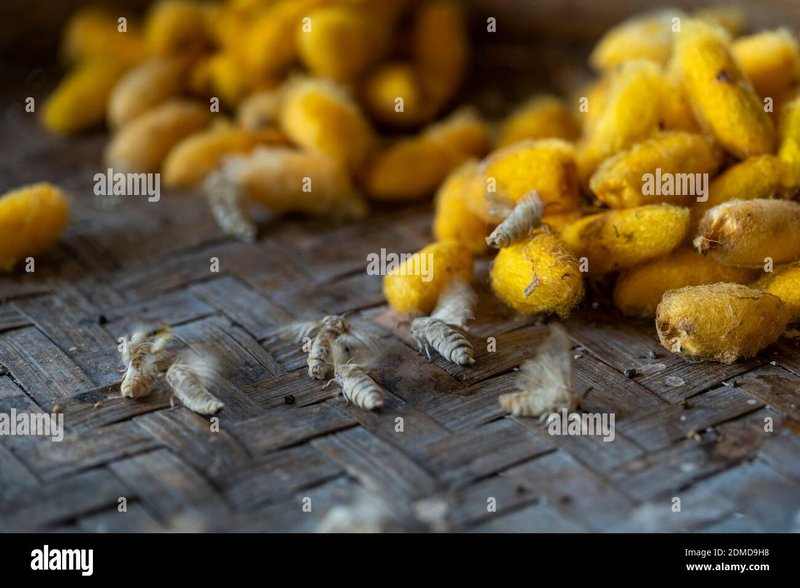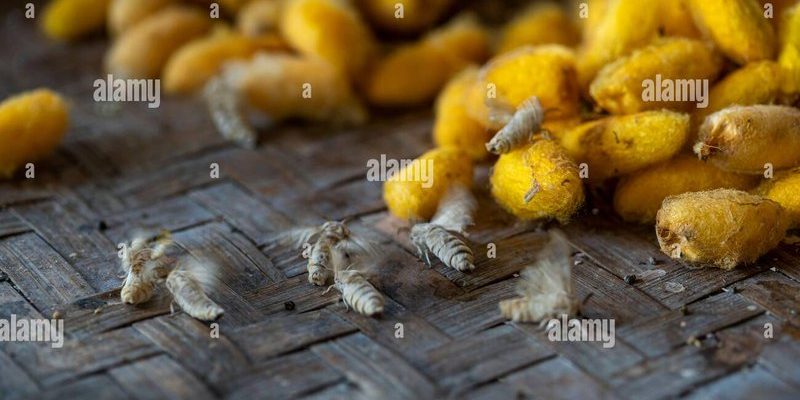
Picture this: the silkworm is like a tiny, diligent worker, tirelessly weaving its masterpiece. But instead of using a loom, it has a unique biological process to create silk. What starts as a simple diet of mulberry leaves transforms into a fascinating story of transformation. Let me explain how these cute little critters turn leaves into one of the most sought-after fibers in the world.
The Life Cycle of the Silkworm
To truly understand how silkworms produce silk threads, we first need to look at their life cycle. Silkworms, scientifically known as *Bombyx mori*, go through several stages before they become the silk-spinning machines we know.
1. **Egg**: It all begins with the silkworm egg. A female moth lays hundreds of eggs, which are tiny—smaller than a grain of rice. These eggs stay dormant until the right conditions come along, usually around spring.
2. **Larva**: Once the eggs hatch, out come the larvae, often referred to as silkworms. They’re incredibly hungry little creatures, primarily feeding on mulberry leaves. This is the stage where they grow quickly, shedding their skin several times.
3. **Pupa**: After a few weeks of munching away, the silkworms enter the pupa stage. They stop eating and start seeking a safe spot to spin their cocoons.
4. **Moth**: After spending about two to three weeks in the cocoon, the fully developed moth emerges. This cycle is fascinating and crucial to understanding how silk is produced.
Each stage plays an important role, but it’s the larva and pupa stages that are critical for silk production.
The Cocoon: A Silkworm’s Silk Factory
Now, let’s talk about the cocoon—the heart of silk production. When silkworms are ready to enter the pupa stage, they begin spinning their cocoons using a special fluid secreted from their salivary glands. This fluid hardens into silk threads as it comes into contact with air.
– **Silk Production**: The process starts with the silkworm secreting a protein-rich fluid. As the silkworm spins, it moves its head in a figure-eight motion, laying down the threads in layers. This creates a protective shell around itself, often around 300,000 to 900,000 fibers!
– **Silk Thread**: The average cocoon consists of a single silk thread that can be over a mile long! It’s truly astonishing that such a small creature can produce such a lengthy, delicate thread.
What’s even more impressive is the strength of silk. Did you know that silk is stronger than steel, ounce for ounce? That’s right! When you think about it, you’re wearing something that’s incredibly strong yet soft and luxurious.
The Composition of Silk: What Makes It So Special?
You might be wondering why silk is so sought after. The answer lies in its unique composition. Silk is primarily made up of two proteins: *fibroin* and *sericin*.
1. **Fibroin**: This is the main structural protein in silk, giving it tensile strength and softness. Think of it as the backbone of silk, providing durability while keeping it luxurious to the touch.
2. **Sericin**: This protein acts as a glue, holding the fibroin strands together while the cocoon forms. Once the silk is harvested, sericin can be removed during processing, enhancing the silk’s softness.
Silk also has an incredible sheen due to its triangular prism-like structure. This unique arrangement reflects light in a way that makes silk fabric shimmer and glow, adding to its appeal.
Harvesting the Silk: From Cocoon to Fabric
After a silkworm spins its cocoon, the next step is harvesting the silk. This part of the process is crucial and requires careful handling.
– **Cocoon Collection**: Farmers collect the cocoons, typically after a few days of spinning. It’s important to do this before the moths emerge. If they do, the silk becomes damaged, affecting the quality.
– **Boiling the Cocoons**: The collected cocoons are then boiled in water to kill the pupa inside. This process also softens the sericin, making it easier to unravel the silk threads.
– **Reeling the Silk**: Once boiled, workers carefully unravel the long silk threads from the cocoons. This delicate process can yield up to several hundred yards of silk from a single cocoon!
After this, the silk threads are twisted together to create the final product that’s ready for weaving into fabric.
The Importance of Silkworms in Textile Production
Silkworms might be small, but their impact on the textile industry is enormous. Silk is often considered a luxury material, and the process of producing it is labor-intensive and requires a lot of care.
– **Economic Significance**: Silk production supports countless livelihoods in rural areas, especially in countries like China and India, where sericulture (silk farming) is a traditional practice. Many families depend on this income, making it vital for local economies.
– **Sustainability**: Interestingly, silk is a biodegradable material. Unlike synthetic fibers that can pollute for years, silk naturally decomposes. This makes it an attractive option for eco-conscious consumers who want to reduce their environmental footprint.
As more people become aware of sustainable fashion, the demand for silk may rise. This could lead to a renaissance of sorts for silk production, bringing along new techniques and innovations.
So, there you have it! The journey from silkworm to silk thread is truly remarkable. These little creatures work hard to create something that we cherish and use in our everyday lives. Whether it’s a beautiful dress or a comfy pillowcase, silk adds a touch of elegance and luxury.
Next time you touch silk, remember the incredible process behind it. It’s not just a fabric; it’s a story of transformation, hard work, and nature at its finest. Silkworms may be small, but their contribution to the world of textiles is undoubtedly grand. So let’s appreciate these tiny silk-spinners for the wonders they create!

